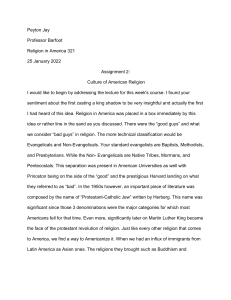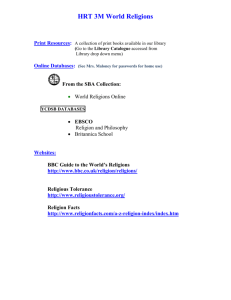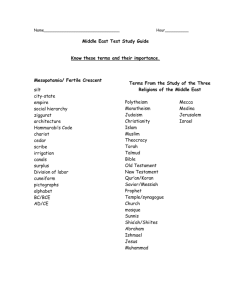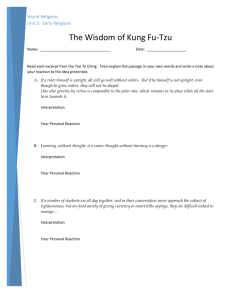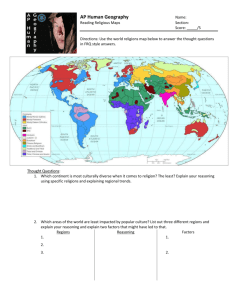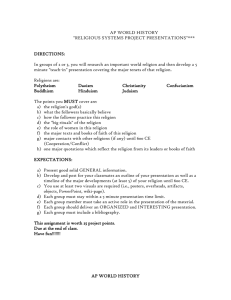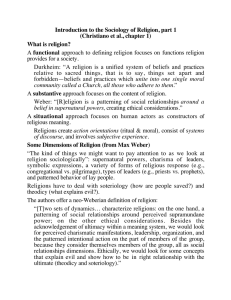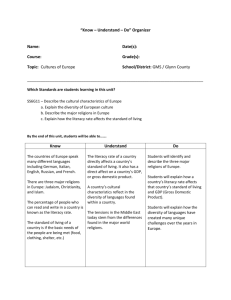Studying Religions: William Young's Articles & Questions
advertisement
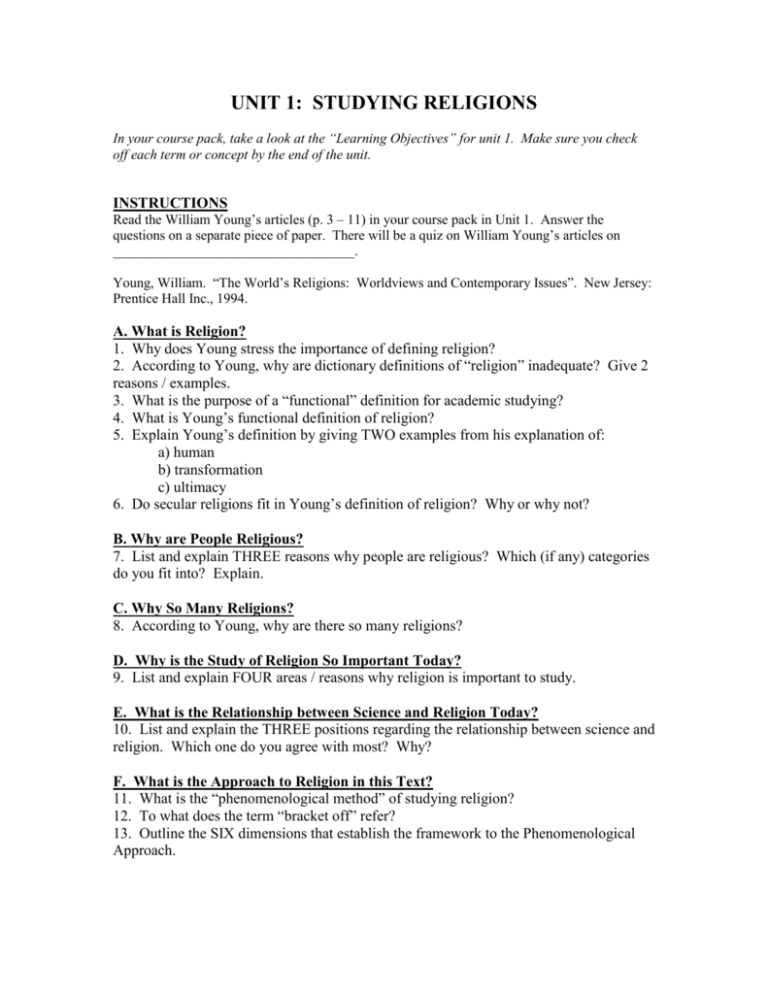
UNIT 1: STUDYING RELIGIONS In your course pack, take a look at the “Learning Objectives” for unit 1. Make sure you check off each term or concept by the end of the unit. INSTRUCTIONS Read the William Young’s articles (p. 3 – 11) in your course pack in Unit 1. Answer the questions on a separate piece of paper. There will be a quiz on William Young’s articles on ___________________________________. Young, William. “The World’s Religions: Worldviews and Contemporary Issues”. New Jersey: Prentice Hall Inc., 1994. A. What is Religion? 1. Why does Young stress the importance of defining religion? 2. According to Young, why are dictionary definitions of “religion” inadequate? Give 2 reasons / examples. 3. What is the purpose of a “functional” definition for academic studying? 4. What is Young’s functional definition of religion? 5. Explain Young’s definition by giving TWO examples from his explanation of: a) human b) transformation c) ultimacy 6. Do secular religions fit in Young’s definition of religion? Why or why not? B. Why are People Religious? 7. List and explain THREE reasons why people are religious? Which (if any) categories do you fit into? Explain. C. Why So Many Religions? 8. According to Young, why are there so many religions? D. Why is the Study of Religion So Important Today? 9. List and explain FOUR areas / reasons why religion is important to study. E. What is the Relationship between Science and Religion Today? 10. List and explain the THREE positions regarding the relationship between science and religion. Which one do you agree with most? Why? F. What is the Approach to Religion in this Text? 11. What is the “phenomenological method” of studying religion? 12. To what does the term “bracket off” refer? 13. Outline the SIX dimensions that establish the framework to the Phenomenological Approach.

